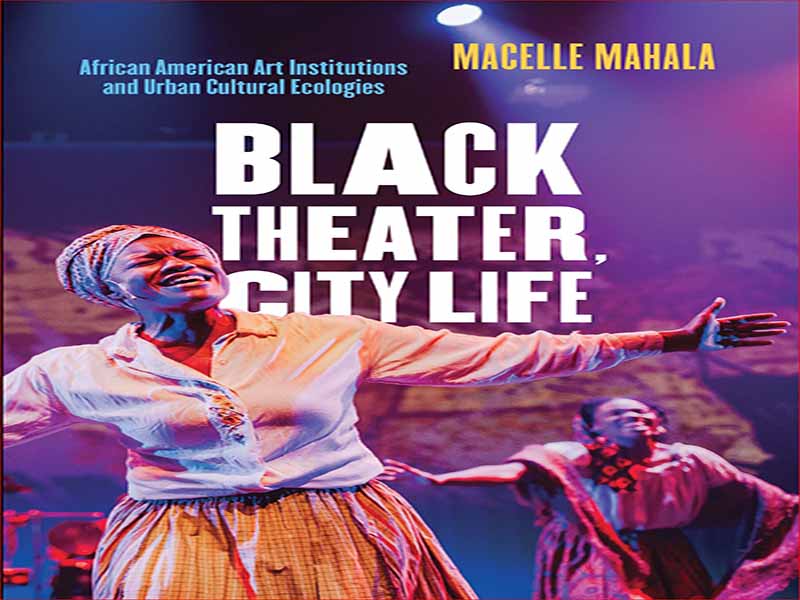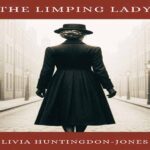- عنوان کتاب: Black Theater, City Life / African American Art Institutions and Urban Cultural Ecologies
- نویسنده/انتشارات: Macelle Mahala
- حوزه: جامعه شناسی آمریکا
- سال انتشار: 2022
- تعداد صفحه: 281
- زبان اصلی: انگلیسی
- نوع فایل: pdf
- حجم فایل: 10.8 مگابایت
وقتی در یک عصر تابستانی در سال 2018 از مرکز هنرهای جنوب غربی شهرستان فولتون خارج شدم، صدای هیپنوتیزم و تپنده ای اطرافم را احاطه کرد و به نظر می رسید که خود هوا زنده است. از زن کنارم پرسیدم این چیست؟ او خندید: “تو نباید از این اطراف باشی.” “آنها جیرجیرک هستند.” اثر انباشته صدها موجود از این موجودات کوچک که هوا را به آواز می خوانند، به همان اندازه الهام بخش بود که تئاتر عالی ای که من به تازگی شاهد آن بودم: نقطه کولمن دومینگو، محصول کمپانی تئاتر رنگ واقعی کنی لئون. وقتی به آتلانتا برمیگشتم، به لذت تماشای تئاتر سیاهپوستان در جنوب فکر کردم. پیش از این هرگز تئاتر را در فضایی ندیده بودم که توسط کادری از کمیسران منطقه ای ثروتمند و با نفوذ آفریقایی آمریکایی ساخته و نگهداری می شد و تقریباً به طور کامل توسط تماشاگران سیاهپوست مشتاق و پاشنه بلند حمایت می شد. تجربه فضای این تولید این باور را در من تقویت کرد که همه تئاترها مختص سایت هستند. مکان و جامعه ای که یک نمایش در آن اتفاق می افتد به اندازه مواد تولید شده برای معناسازی و تجربه کلی تئاتر اهمیت دارد. تماشای Dot در حومه آتلانتا این باور من را تأیید کرد که برای درک واقعی اهمیت فرهنگی تئاتر، باید همه شرایط مادی را که در تولید قرار میگیرند، از جمله و شاید بهویژه بومشناسی هنری که در آن یک اثر خاص در گردش است، بررسی کرد. مؤسسات تئاتر سیاه بخشهای حیاتی اکولوژیهای هنری کثرتگرا هستند. درست همانطور که سمفونیها، ارکسترها و شرکتهای اپرا در درجه اول میراث اروپایی آمریکا را جشن میگیرند، تئاترهای سیاهپوست، شرکتهای رقص و مؤسسات هنری، میراث فرهنگی آفریقایی آمریکا را جشن میگیرند. اهمیت یک تئاتر سیاه با پشتیبانی خوب در یک منطقه شهری چند قومیتی، این ادعاست که شهر به عنوان یک کل برای میراث آفریقایی خود ارزش قائل است و آن را گرامی می دارد. بنابراین تئاتر سیاه در اجرای هویت اجتماعی و فرهنگی شهر نقش دارد. گری بریج و سوفی واتسون در مقاله خود با عنوان «تأملاتی در مورد عموم مردم و فرهنگها» بیان میکنند که «جسمهای اجرایی و گفتمان عقلانی بهعنوان اشکالی از ارتباط در تداوم پاسخ هوشمندانه انسان به محیط در هم آمیخته میشوند.»1 بریج و واتسون اساساً بر عموم تمرکز میکنند. فضاهایی مانند پارک ها و میدان ها و شیوه های جسمانی که افراد از نظر فرهنگی خود را ابراز می کنند و در این فضاها بر یکدیگر تأثیر می گذارند. تئوری آنها همچنین برای تمرین تئاتر سیاه کاملاً قابل استفاده است. یکی از راههایی که یک شهر اهمیت فرهنگ آمریکایی آفریقایی تبار را تشخیص میدهد، ارائه بودجه و حمایت صریح از کار فکری و نمایشهای بدنی هنرمندان آفریقایی آمریکایی است. پیشبینیهای سرشماری به ما میگویند که در نیم قرن آینده، «ایالات متحده به یک کشور متکثر تبدیل میشود، جایی که جمعیت سفیدپوست غیر اسپانیایی همچنان بزرگترین گروه واحد باقی میماند، اما هیچ گروهی در اکثریت نیست». برنامهریزی و برنامهریزی، دیگر بحث برانگیز نیست که بگوییم برنامههای هنری در شهرهای آمریکا باید منعکسکننده پیشینههای فرهنگی، تاریخ و هویت اجزای یک شهر خاص باشد. در حالی که در تئوری پذیرفته شده است، در عمل بودجه هنر همچنان نابرابری های نژادی و قومیتی را در بخش هایی از بودجه اختصاص داده شده به سازمان های هنری متمرکز بر تولید فرهنگی غیرسفیدپوست نشان می دهد. بنابراین، تئاترهای سیاه بخش مهم و در عین حال کمبود بودجه، جزء رویکرد «موزاییک» بسیاری از شهرها به مدیریت و حمایت از هنر هستند. در دهه گذشته، من بورس تحصیلی خود را بر بیان کارهای مهم فرهنگی، هنری و مدنی انجام شده توسط مؤسسات تئاتر آفریقایی آمریکایی متمرکز کرده ام. مانند کالجها و دانشگاههای سیاهپوست از لحاظ تاریخی، کمکهای مؤسسات تئاتر سیاهپوست هم از نظر حمایت مالی و هم از نظر شناخت گسترده هدف حیاتی که در حوزه خود خدمت میکنند، نادیده گرفته میشود. هدف این کتاب با وقایع نگاری تاریخ مؤسسات تئاتر سیاهپوستان در چندین شهر آمریکا، جلب توجه به اهمیت هنری و مدنی آنها و بیان چگونگی شکلدهی آنها و همچنین بازتاب فرهنگ و تاریخ شهرهایی است که در آن زندگی میکنند.
When I stepped outside of Fulton County’s Southwest Arts Center on a summer evening in 2018, a hypnotic and pulsating sound surrounded me, making it seem as if the air itself were alive. I asked the woman next to me what it was. “You must not be from around here,” she laughed. “Those are crickets.” The cumulative effect of hundreds of these tiny creatures making the air sing was as awe-inspiring as the excellent theater production I had just witnessed: Colman Domingo’s Dot, produced by Kenny Leon’s True Colors Theatre Company. As I drove back to Atlanta, I thought about the joy of witnessing black theater in the South. I had never before seen theater performed in a space built and maintained by a cadre of wealthy and influential African American county commissioners and patronized almost entirely by an enthusiastic and well-heeled black audience. Experiencing the atmosphere of this production reinforced my belief that all theater is site specific. The location and community in which a play takes place are as important to the meaning making and overall theatergoing experience as the material being produced. Watching Dot in the suburbs of Atlanta confirmed my belief that to truly understand the cultural importance of theater, one must examine all of the material conditions that go into production, including and perhaps especially the arts ecology in which a particular work circulates. Black theater institutions are vital parts of pluralist arts ecologies. Just as symphonies, orchestras, and opera companies primarily celebrate the European patrimony of America, publicly supported black theaters, dance companies, and arts institutions celebrate America’s African cultural patrimony. The significance of a well-supported black theater in a multiethnic urban area is an assertion that the city as a whole values and celebrates its African heritage. Black theaters thus play a role in the performance of the social and cultural identity of the city. In their essay “Reflections on Publics and Cultures,” Gary Bridge and Sophie Watson state that “performative bodies and rational discourse are interleaved as forms of communication in a continuum of human intelligent response to the environment.”1 Bridge and Watson focus primarily on public spaces such as parks and squares and the corporeal ways that people culturally assert themselves and influence each other in these spaces. Their theory is also quite applicable to the practice of black theater. One way a city recognizes the importance of African American culture is by providing explicit funding and support to the intellectual labor and bodily performances of African American artists. Census projections tell us that in the next half century, “the U.S. will become a plurality nation, where the non-Hispanic white population remains the largest single group, but no group is in the majority.”2 In terms of urban arts funding, planning, and programming, it is no longer controversial to assert that arts programming in American cities should reflect the cultural backgrounds, histories, and identities of a particular city’s constituents. While accepted in theory, in practice arts funding continues to exhibit racial and ethnic inequalities in the portions of funding directed to arts organizations focused on nonwhite cultural production. 3 Black theaters are thus an important, yet underfunded, component of many cities’ “mosaic” approach to arts administration and support. For the past decade I have focused my scholarship on articulating the important cultural, artistic, and civic work done by African American theater institutions. Like historically black colleges and universities, the contributions of black theater institutions are underappreciated both in terms of financial support and in terms of widespread recognition of the critical purpose they serve in their field. By chronicling the history of black theater institutions in several American cities, the aim of this book is to call attention to their artistic and civic import and to articulate how they shape as well as reflect the culture and history of the cities in which they reside.
این کتاب را میتوانید از لینک زیر بصورت رایگان دانلود کنید:
Download: Black Theater, City Life




































نظرات کاربران